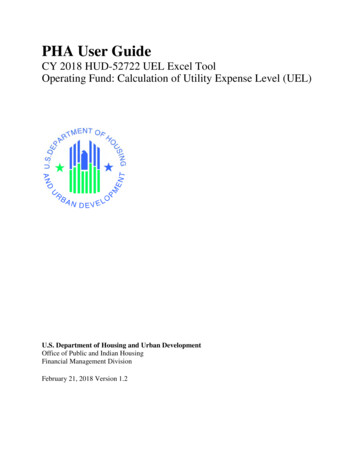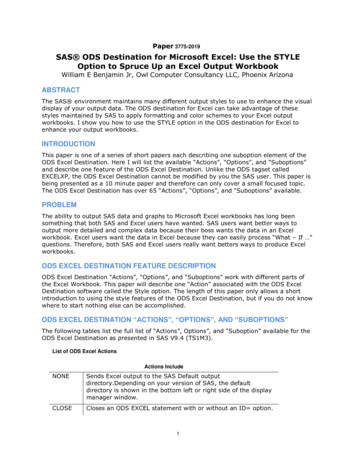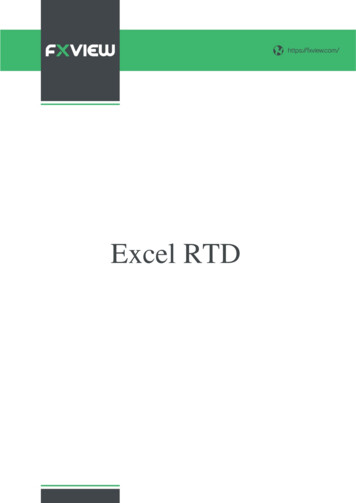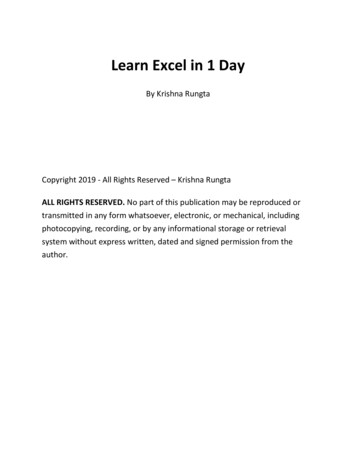
Transcription
Learn Excel in 1 DayBy Krishna RungtaCopyright 2019 - All Rights Reserved – Krishna RungtaALL RIGHTS RESERVED. No part of this publication may be reproduced ortransmitted in any form whatsoever, electronic, or mechanical, includingphotocopying, recording, or by any informational storage or retrievalsystem without express written, dated and signed permission from theauthor.
Table Of ContentChapter 1: Introduction to Microsoft Excel 1011.2.3.4.What is Microsoft Excel?How to Open Microsoft Excel?Understanding the RibbonUnderstanding the worksheet (Rows and Columns, Sheets,Workbooks)5. Customization Microsoft Excel Environment6. Important Excel shortcuts7. Best Practices when working with Microsoft ExcelChapter 2: How to Add, Subtract, Multiply, Divide in Excel1. Formatting data in Microsoft Excel2. Setting the print area and printing (Print View) & Page LayoutChapter 3: Excel Data Validation, Filters, Grouping1.2.3.4.Data validationData filtersGroup and UngroupAdding images to spreadsheetsChapter 4: Best Excel Formulas & Functions: You Need to Know Now1.2.3.4.5.Tutorials DataWhat is a formula?Mistakes to avoid when working with formulas in ExcelWhat is a function? (Function Wizard)The importance of functions
6.7.8.9.10.Common functionsNumeric FunctionsString functionsDate Time FunctionsVLOOKUP functionChapter 5: IF, AND, OR, Nested IF & NOT Logical Functions in Excel1.2.3.4.5.What is a Logical Function?IF Function exampleExcel Logic functions explainedNested IF functionsPractical exampleChapter 6: How to Create Charts in Excel: Types & Examples1.2.3.4.What is a chart?Types of chartsThe importance of chartsStep by step example of creating charts in ExcelChapter 7: How to make Budget in Excel: Personal Finance Tutorial1. Why manage Budget?2. Major components of a personal finance system3. Using Excel to set personal budgets, and record income andexpenses4. Visualizing the data using chartsChapter 8: How to Import Data into Excel from Access, XML, Text file, SQLServer
1.2.3.4.5.What is external data source?MS Access external data source exampleWebsite(XML data) external data source exampleText file external data source exampleSQL Server external data source exampleChapter 9: How to Create Pivot Table in Excel: Beginners Tutorial1.2.3.4.What is a Pivot Table?Step by Step tutorial on creating pivot tables2-Dimensional pivot tablesVisualizing pivot table data using chartsChapter 10: Advanced Charts & Graph in Excel1. What is an advanced chart?2. The importance of advanced charts3. Step by step example of creating advanced chartsChapter 11: What is Microsoft Office 365? Benefits of Excel on Cloud1.2.3.4.5.What is Office 365?Benefits of Office 365Disadvantages of Office 365How to subscribe to Office 365Devices supported by Office 365?Chapter 12: CSV vs Excel (.xls) - What's the Difference?1. Difference between Excel Vs CSV2. Similarities between CSV and Excel Files
Chapter 13: Excel VLOOKUP Tutorial for Beginners: Learn with Examples1. Usage of VLOOKUP:2. Steps for Applying the VLOOKUP function3. VLOOKUP for Approximate Matches4. Vlookup function applied between 2 different sheets placed in thesame workbookChapter 14: Excel ISBLANK Function: Learn with Example1.2.3.4.How to use the ISBLANK function?Example 1 How to use ISBLANK?Example 2: How to use ISBLANK with different excel functions?Example 3: How to use ISBLANK function with conditionalformatting?Chapter 15: Sparkline in Excel with EXAMPLES1.2.3.4.5.6.7.What is Sparkline in Excel?Why use Sparkline?Types of SparklineHow to insert Sparkline into excel?Create a Report with a TableHow to format a Sparkline?Why use Sparkline?Chapter 16: SUMIF function in Excel: Learn with EXAMPLE1.2.3.4.5.6.What is SUMIF Function?How to use the SUMIF function?Formula of MS SUMIFExample 1: Using SUMIFExample 2: How to use SUMIF with comparison operatorsExample 3: How to use SUMIF with dates
Chapter 1: Introduction to MicrosoftExcel 101What is Microsoft Excel?Microsoft Excel is a spreadsheet program that is used to record and analysenumerical data. Think of a spreadsheet as a collection of columns and rowsthat form a table. Alphabetical letters are usually assigned to columns andnumbers are usually assigned to rows. The point where a column and a rowmeet is called a cell. The address of a cell is given by the letter representingthe column and the number representing a row. Let's illustrate this using thefollowing image.Why Should I Learn Microsoft Excel?We all deal with numbers in one way or the other. We all have dailyexpenses which we pay for from the monthly income that we earn. For oneto spend wisely, they will need to know their income vs. expenditure.Microsoft Excel comes in handy when we want to record, analyze and storesuch numeric data.
Where can I get Microsoft Excel?There are number of ways in which you can get Microsoft Excel. You canbuy it from a hardware computer shop that also sells software.Microsoft Excel is part of the Microsoft Office suite of programs. Alternatively,you can download it from the Microsoft website but you will have to buy thelicense key.How to Open Microsoft Excel?Running Excel is not different from running any other Windows program. Ifyou are running Windows with a GUI like (Windows XP, Vista, and 7) followthe following steps.Click on start menuPoint to all programs
Point to Microsoft ExcelClick on Microsoft ExcelAlternatively, you can also open it from the start menu if it has been addedthere. You can also open it from the desktop shortcut if you have createdone.For this tutorial, we will be working with Windows 8.1 and Microsoft Excel2013. Follow the following steps to run Excel on Windows 8.1Click on start menuSearch for Excel N.B. even before you even typing, all programs startingwith what you have typed will be listed.Click on Microsoft ExcelThe following image shows you how to do thisUnderstanding the RibbonThe ribbon provides shortcuts to commands in Excel. A command is
an action that the user performs. An example of a command is creating anew document, printing a documenting, etc. The image below shows theribbon used in Excel 2013.Ribbon components explainedRibbon start button - it is used to access commands i.e. creating newdocuments, saving existing work, printing, accessing the options forcustomizing Excel, etc.Ribbon tabs – the tabs are used to group similar commands together. Thehome tab is used for basic commands such as formatting the data to make itmore presentable, sorting and finding specific data within the spreadsheet.Ribbon bar – the bars are used to group similar commands together. As anexample, the Alignment ribbon bar is used to group all the commands thatare used to align data together.
Understanding the worksheet (Rows andColumns, Sheets, Workbooks)A worksheet is a collection of rows and columns. When a row and a columnmeet, they form a cell. Cells are used to record data.Each cell is uniquely identified using a cell address. Columns are usuallylabelled with letters while rows are usually numbers.A workbook is a collection of worksheets. By default, a workbook has threecells in Excel. You can delete or add more sheets to suit your requirements.By default, the sheets are named Sheet1, Sheet2 and so on and so forth.You can rename the sheet names to more meaningful names i.e. DailyExpenses, Monthly Budget, etc.Customization Microsoft Excel EnvironmentPersonally I like the black colour, so my excel theme looks blackish. Yourfavourite colour could be blue, and you too can make your theme colourlook blue-like. If you are not a programmer, you may not want to includeribbon tabs i.e. developer. All this is made possible via customizations. Inthis sub-section, we are going to look at;Customization the ribbonSetting the colour theme
Settings for formulasProofing settings SavesettingsCustomization of ribbonThe above image shows the default ribbon in Excel 2013. Let's start withcustomization the ribbon, suppose you do not wish to see some of the tabson the ribbon, or you would like to add some tabs that are missing such asthe developer tab. You can use the options window to achieve this.Click on the ribbon start buttonSelect options from the drop down menu. You should be able to seean Excel Options dialog windowSelect the customize ribbon option from the left-hand side panel asshown below
On your right-hand side, remove the check marks from the tabs thatyou do not wish to see on the ribbon. For this example, we haveremoved Page Layout, Review, and View tab.Click on the "OK" button when you are done.Your ribbon will look as followsAdding custom tabs to the ribbonYou can also add your own tab, give it a custom name and assign commandsto it. Let's add a tab to the ribbon with the text Guru99
1. Right click on the ribbon and select Customize the Ribbon. Thedialogue window shown above will appear2. Click on new tab button as illustrated in the animated imagebelow3.4.5.6.7.8.9.10.11.Select the newly created tabClick on Rename buttonGive it a name of Guru99Select the New Group (Custom) under Guru99 tab as shown in theimage belowClick on Rename button and give it a name of My CommandsLet's now add commands to my ribbon barThe commands are listed on the middle panelSelect All chart types command and click on Add buttonClick on OKYour ribbon will look as follows
Setting the colour themeTo set the color-theme for your Excel sheet you have to go to Excel ribbon,and click on à File àOption command. It will open a window where you haveto follow the following steps.
1. The general tab on the left-hand panel will be selected by default.2. Look for colour scheme under General options for working with Excel3. Click on the colour scheme drop-down list and select the desiredcolour4. Click on OK buttonSettings for formulasThis option allows you to define how Excel behaves when you areworking with formulas. You can use it to set options i.e. autocompletewhen entering formulas, change the cell referencing style and use numbersfor both columns and rows and other options.
If you want to activate an option, click on its check box. If you want todeactivate an option, remove the mark from the checkbox. You can thisoption from the Options dialogue window under formulas tab from the lefthand side panelProofing settingsThis option manipulates the entered text entered into excel. It allowssetting options such as the dictionary language that should be used whenchecking for wrong spellings, suggestions from the dictionary, etc. You canthis option from the options dialogue window under the proofing tab fromthe left-hand side panel
Save settingsThis option allows you to define the default file format when saving files,enable auto recovery in case your computer goes off before you could saveyour work, etc. You can use this option from the Options dialogue windowunder save tab from the left- hand side panelImportant Excel shortcutsCtrl PCtrl NCtrl SCtrl CCtrl Vused to open the print dialogue windowcreates a new workbooksaves the current workbookcopy contents of current selectpaste data from the clipboard
SHIFT F3SHIFT F11F2displays the function insert dialog windowCreates a new worksheetCheck formula and cell range coveredBest Practices when working with MicrosoftExcel1. Save workbooks with backward compatibility in mind. If you are notusing the latest features in higher versions of Excel, you should saveyour files in 2003 *.xls format for backwards compatibility2. Use description names for columns and worksheets in a workbook3. Avoid working with complex formulas with many variables. Try to breakthem down into small managed results that you can use to build on4. Use built-in functions whenever you can instead of writing your ownformulasSummaryMicrosoft Excel is a powerful spreadsheet program used to record,manipulate, store numeric data and it can be customized to match yourpreferencesThe ribbon is used to access various commands in ExcelThe options dialogue window allows you to customize a number ofitems i.e. the ribbon, formulas, proofing, save, etc.
Step by Step tutorial on creating pivot tables 3. 2-Dimensional pivot tables 4. Visualizing pivot table data using charts Chapter 10: Advanced Charts & Graph in Excel . we will be working with Windows 8.1 and Microsoft Excel 2013. Follow the following steps to run Excel on Windows 8.1 Click on start menu Search for Excel N.B. even before you .

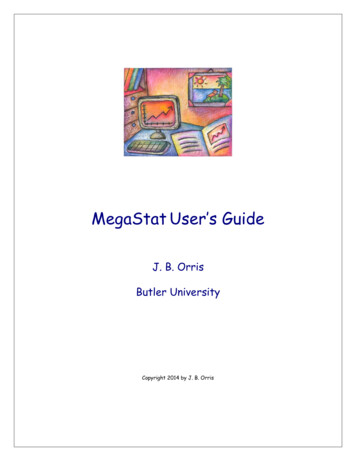

![Welcome [dashdiet.me]](/img/17/30-day-weight-loss-journal.jpg)

